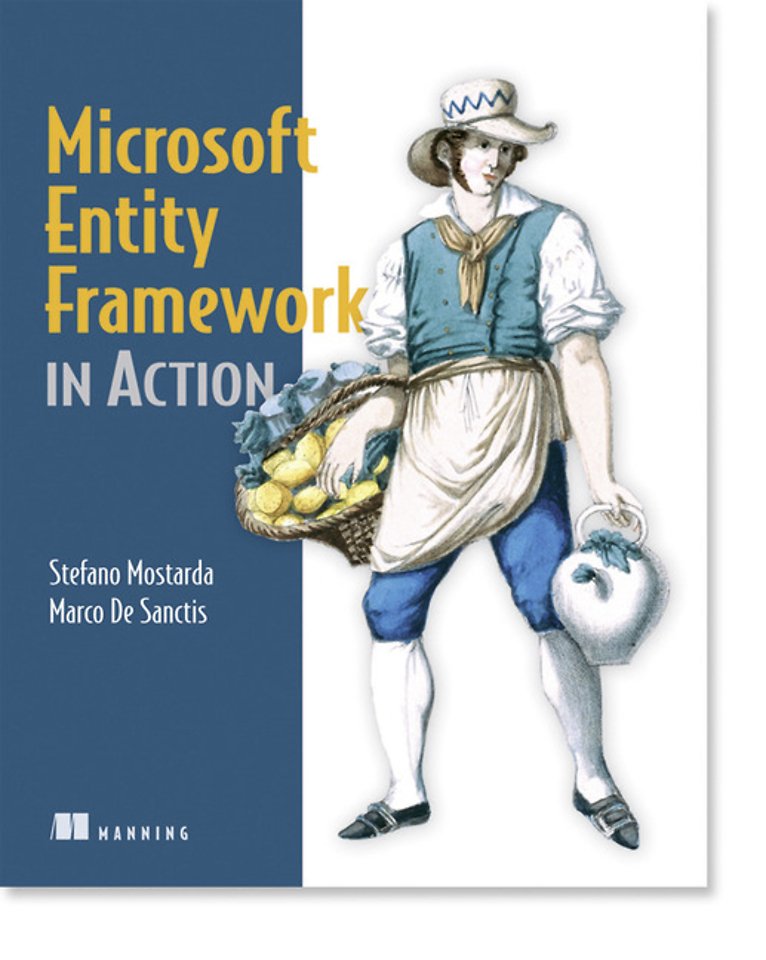Entity Framework 4 In Action
Samenvatting
Entity Framework builds on the ADO.NET persistence model and the language features of LINQ to create a powerful persistence mechanism that bridges the gap between relational databases and object-oriented languages.
'Entity Framework 4 in Action' is an example-rich tutorial that helps .NET developers learn and master the subject. It begins by explaining object/relational mapping and then shows how you can easily transition to EF from ADO.NET. Through numerous focused examples and two larger case studies, the book unfolds the EF story in a clear, easy-to-follow style. Infrastructure and inner workings of EF are discussed when you need them to understand a particular feature.
What's inside:
- Full coverage of EF 4 features
- Layer separation, Data Layer, and Domain Model
- Best practices
This book is written for .NET developers. Knowledge of ADO.NET is helpful but not required.
Specificaties
Inhoudsopgave
Preface
Acknowledgments
About this book
About the cover illustration
Part 1: Redefining your data-access strategy
1. Data access reloaded: Entity Framework
-Getting started with data access
-Developing applications using database-like structures
-Using classes to organize data
-Delving deep into object/relational differences
-Letting Entity Framework ease your life
-How Entity Framework performs data access
-Summary
2. Getting started with Entity Framework
-Introducing the OrderIT example
-Designing the OrderIT model and database
-Structuring the application
-A sneak peek at the code
-Summary
Part 2 Getting started with Entity Framework
3. Querying the object model: the basics
-One engine, many querying methods
-The query engine entry point: Object Services
-Summary
4. Querying with LINQ to Entities
-Filtering data
-Projecting results
-Grouping data
-Sorting
-Joining data
-Querying with inheritance
-Using functions
-Executing handmade queries
-Fetching
-Summary
5. Domain model mapping
-The Entity Data Model
-Creating consumable entities
-Defining relationships in the model
-Mapping inheritance
-Extending the EDM with custom annotations
-Summary
6. Understanding the entity lifecycle
-The entity lifecycle
-Managing entity state
-Managing change tracking with ObjectStateManager
-Summary
7. Persisting objects into the database
-Persisting entities with SaveChanges
-Persisting changed entities into the database
-Persisting entities graphs
-A few tricks about persistence
-Summary
8. Handling concurrency and transactions
-Understanding the concurrency problem
-Handling concurrency in Entity Framework
-Managing transactions
-Summary
Part 3: Mastering Entity Framework
9. An alternative way of querying: Entity SQL
-Query basics
-Filtering data
-Projecting results
-Grouping data
-Sorting data
-Joining data
-Querying for inheritance
-Using query-builder methods
-Working with the Entity Client data provider
-Summary
10. Working with stored procedures
-Mapping stored procedures
-Returning data with stored procedures
-Embedding functions in the storage model
-Updating data with stored procedures
-Summary
11. Working with functions and views
-Views in the storage model: defining queries
-User-defined functions and scalar-valued functions
-Summary
12. Exploring EDM metadata
-Metadata basics
-Retrieving metadata
-Building a metadata explorer
-Writing generic code with metadata
-Summary
13. Customizing code and the designer
-How Visual Studio generates classes
-Customizing class generation
-How Visual Studio generates database DDL
-Customizing DDL generation
-Creating designer extensions
-Summary
Part 4: Applied Entity Framework
14. Designing the application around Entity Framework
-The application design process
-A typical three-layer architecture
-Principles of domain-driven design
-Retrieving references to a domain's entities
-Summary
15. Entity Framework and ASP.NET
-EntityDataSource, a new approach to data binding
-Using Dynamic Data controls with Entity Framework
-The ObjectContext lifecycle in ASP.NET
-Common scenarios involving ASP.NET and Entity Framework
-Summary
16. Entity Framework and n-tier development
-n-Tier problems and solutions
-Developing a service using entities as contracts
-Developing a service using DTOs
-Developing a service using STEs
-Summary
17. Entity Framework and Windows applications
-An example application
-Designing model classes for binding
-Binding in Windows Forms applications
-Binding in WPF applications
-Summary
18. Testing Entity Framework
-Unit tests at a glance
-Writing a test suite in Visual Studio 2010
-Isolating dependencies
-Unit-testing the data access layer
-Testing the persistence and retrieval of an entity
-Summary
19. Keeping an eye on performance
-Testing configuration and environment
-Database-writing comparison
-Query comparisons in the default environment
-Optimizing performance
-Summary
Appendix A : Understanding LINQ
Appendix B : Entity Framework tips and tricks
Index
Anderen die dit boek kochten, kochten ook
Net verschenen
Rubrieken
- aanbestedingsrecht
- aansprakelijkheids- en verzekeringsrecht
- accountancy
- algemeen juridisch
- arbeidsrecht
- bank- en effectenrecht
- bestuursrecht
- bouwrecht
- burgerlijk recht en procesrecht
- europees-internationaal recht
- fiscaal recht
- gezondheidsrecht
- insolventierecht
- intellectuele eigendom en ict-recht
- management
- mens en maatschappij
- milieu- en omgevingsrecht
- notarieel recht
- ondernemingsrecht
- pensioenrecht
- personen- en familierecht
- sociale zekerheidsrecht
- staatsrecht
- strafrecht en criminologie
- vastgoed- en huurrecht
- vreemdelingenrecht







